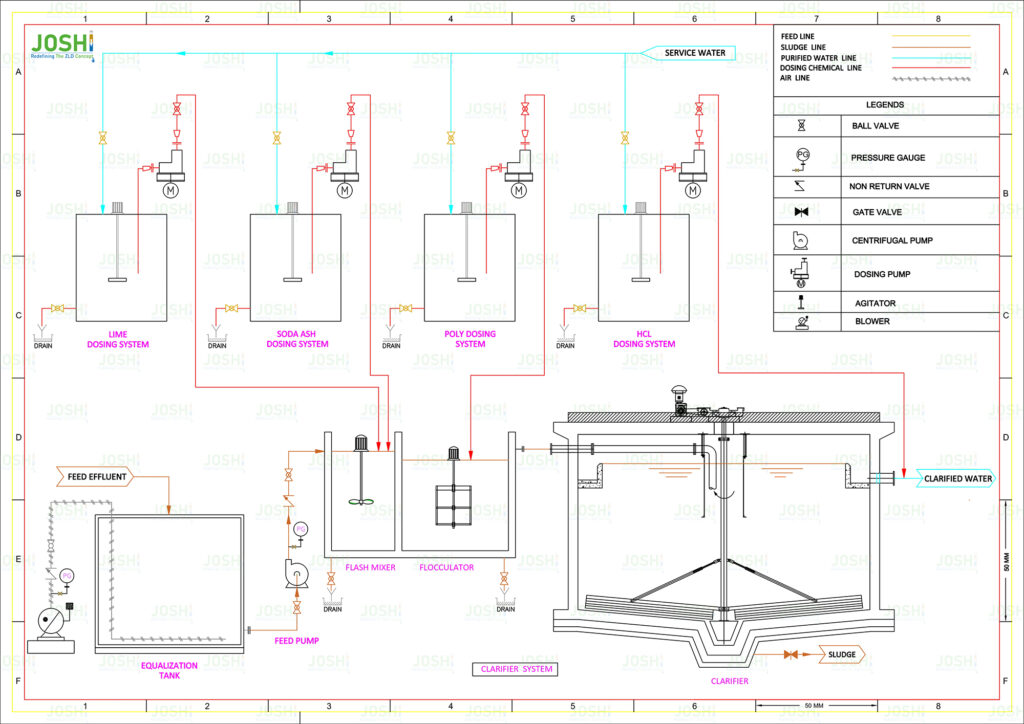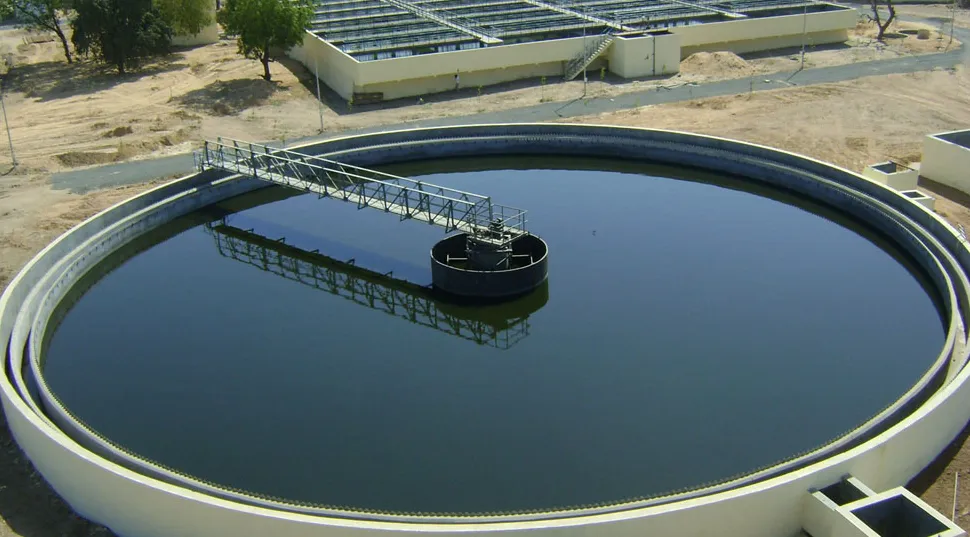Conventional Clarifier
A clarifier, also known as a sedimentation tank or settling tank, is a key component of a wastewater treatment plant. Its primary function is to separate suspended solids and particles from the wastewater through the process of sedimentation, where the particles settle to the bottom of the tank under the influence of gravity.
Process Steps & Key Functions
Inflow Distribution: The wastewater enters the clarifier and is evenly distributed across the surface of the tank to ensure uniform flow and settling conditions. Inlet baffles or other flow control devices are often used for this purpose.
Settling Zone: As the wastewater flows through the clarifier, it enters a quiescent or low-velocity settling zone. The reduce velocity allows the suspende solids and particles to settle out of the wastewater due to gravity.
Sedimentation: The settling zone allows the heavier and larger particles to settle more quickly, while smaller and lighter particles take longer to settle. The settling process is facilitated by the removal of turbulence and the creation of calm conditions within the clarifier.
Sludge Collection: The settle particles form a layer of sludge or sediment at the bottom of the clarifier, known as primary sludge. This sludge is periodically collect and removed using sludge rakes, scrapers, or other mechanisms and directed to further treatment processes or sludge handling facilities.
Clarified Effluent: The clarified wastewater, with reduce suspende solids concentration, flows out of the clarifier through effluent weirs or outlets locate near the top of the tank. The effluent is typically clearer and cleaner than the influent wastewater.
Design Features
Clarifiers can vary in design and size depending on the specific needs and capacity of the wastewater treatment plant. They may incorporate features such as incline plates, tube settlers, or other mechanisms to enhance the settling process and increase the surface area available for particle removal.
Significance & Advantages
The purpose of a clarifier is to remove solid particles, such as organic matter, suspended solids, and colloidal substances, from the wastewater, thereby clarifying it and producing a cleaner effluent. The clarifie effluent can then undergo further treatment processes such as filtration, biological treatment, or advanced treatment methods, to further improve the quality of the treated effluent before its discharge or reuse.
Targeted Impurities
- TSS
- Turbidity
- BOD
- Colloidal Particles
- Partial Color
- grit
- Chemical Sludge
- Hardness
- Heavy Metals






